Speaking of durability in boatbuilding, I used my visit to the German Allures & Garcia dealer in Bremerhaven to check for a deciding detail: The rudder trunks and shafts. A sailing yacht like the Allures 40.9, the smallest of their fleet and an awesome boat, offering the best compromise between size and price (which in my opinion is the 40 feet-sized yacht) or the Garcia are made to beach or fall dry. “It´s in their DNA”, says Nils Schürg. “People going for an Allures are doing this because they can have their boat on dry land without damage.”
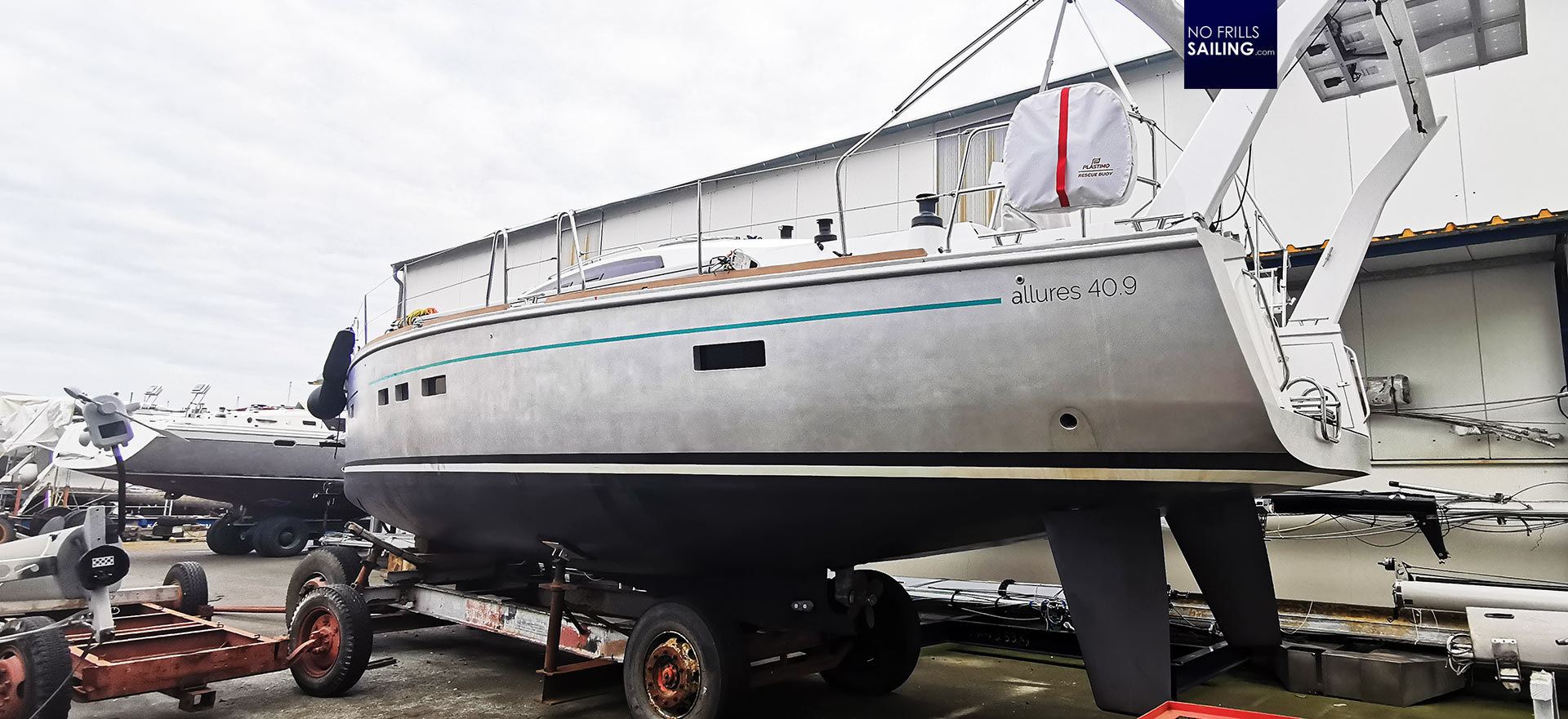
Variable draft is a big thing. Even for me and my own new boat, which boasts a swing keel: I am looking so much forward to reaching anchorages no fin keeled boat could ever reach. It´s a notch up with the Allures: This yacht may be taken to very shallow depths as well as having her sitting on dry sand when tides are falling. Can you imagine a round-the-world-trip without the ability to steam upriver interesting estuaries or spend a day on dry sand? That´s the boat to do it with.
A boat for every purpose: Making a GRP and aluminium yacht
Aluminium is the material of choice when it coms to yachts which are sailed to remote areas and taken to sailing action that is more than the usual two- or three-weeks vocational trip in the Mediterranean. Sailors opting for an Allures seek adventures, long haul cruising and want the maximum of safety – for example in view of collisions with UFOs, grounding and so on. For that matter, the boat´s hulls are made in a special way.
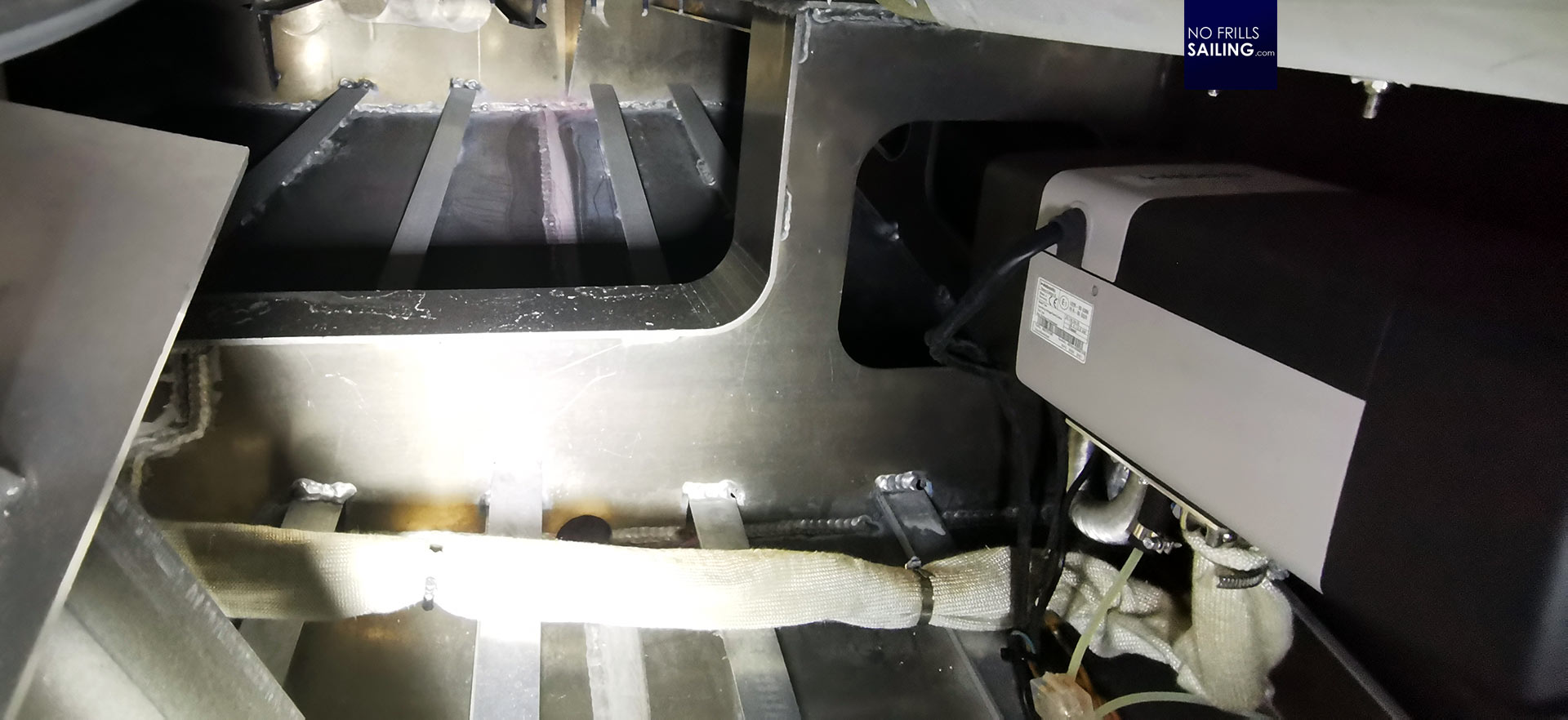
Well, it´s not a special way, it´s the way real ships are built: A skeleton made of a real keel, stringers and frames is welded. Onto the frame smaller and bigger chunks of planking are welded and brought into shape. In case of the fabulous Alubat Cigale it´s an elaborate round chined frame, looking at the priceworthy counterpart, the Ovni, it´s a hard-chined hull. Looking at Allures, they´ve come up with a mix of both: A rounded freeboard almost down to the keel, a straight horizontal plate that makes for a flat support area when the boat falls dry. I´ve seen it in both Allures´ and Alubat´s yards. No matter which brand you go for, it´s sturdy, solid and durable. GRP boats are made in a rather different way.
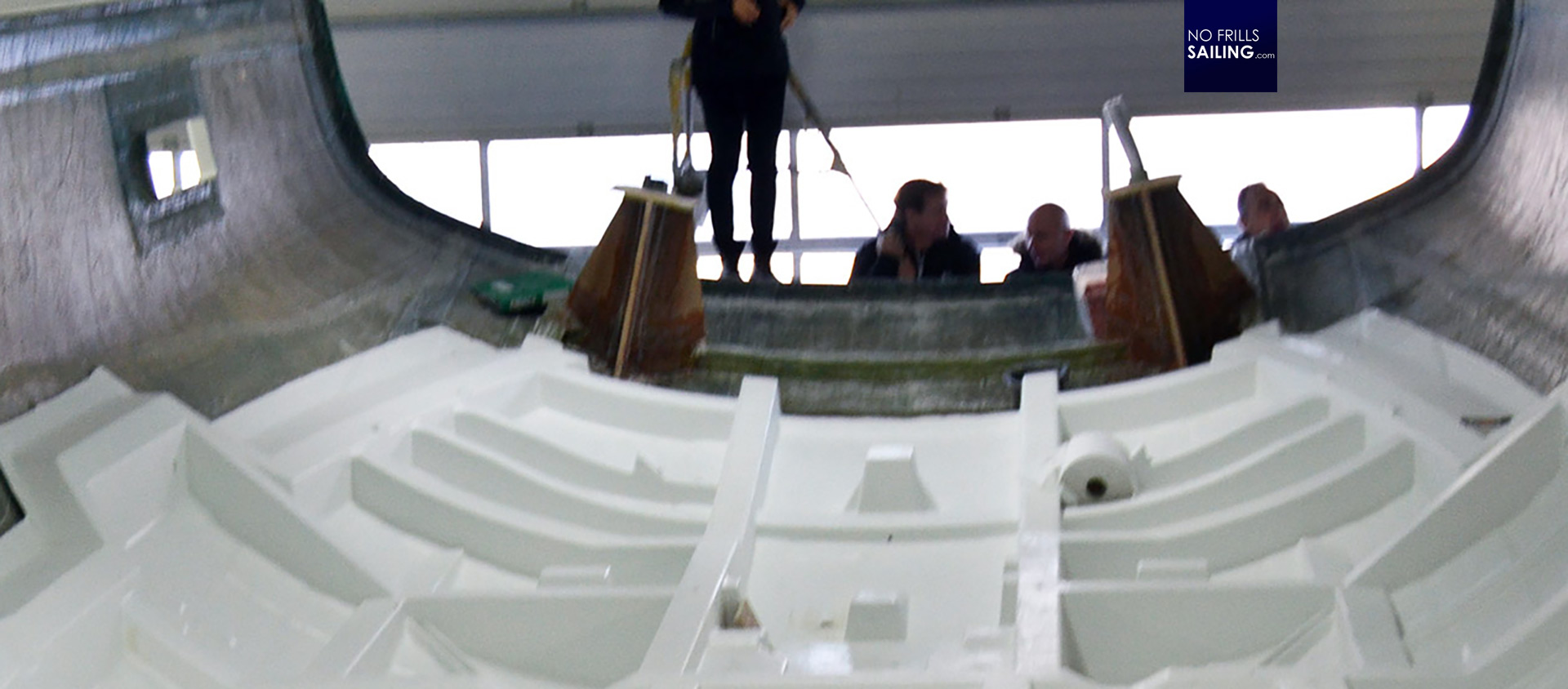
The mix of several layers of glassfiber-mats and resin, sometimes combined with sandwich material like Balsa wood or synthetic hard foams. These hulls are mostly made in monolithic handlaid-method with polyester resin. The hulls gain their strengths by putting together an outer hull and one large GRP-floor unit which acts like stringer and frames. Surplus stability is added by furniture bulkheads. GRP boats are durable as well, comparatively lightweight and relatively stiff – best for spare time and vacational sailing in moderate sailing areas. Falling dry in a GRP-yacht? Not many brands offer that amenity. So, what´s the most important constructional asset when it comes to falling dry in a boat? Right – the boat needs to remain upright in a stable position. This is insured by the rudders.
Scary memories: Cracking a rudder shaft
Now, the rudder of a boat is the steering unit. It´s essential to have a boat following a dedicated route. A rudder in fin-keel boats is also a substantial part in insuring stability: When boatbuilding turned away from full-keeled boats, this full keel was “devided” into the fixed keel and the (then skeged) rudder. Without the rudder in the end, longitudinal constancy would be compromised. Last year I´ve had my own experience in loosing that part of a ship …
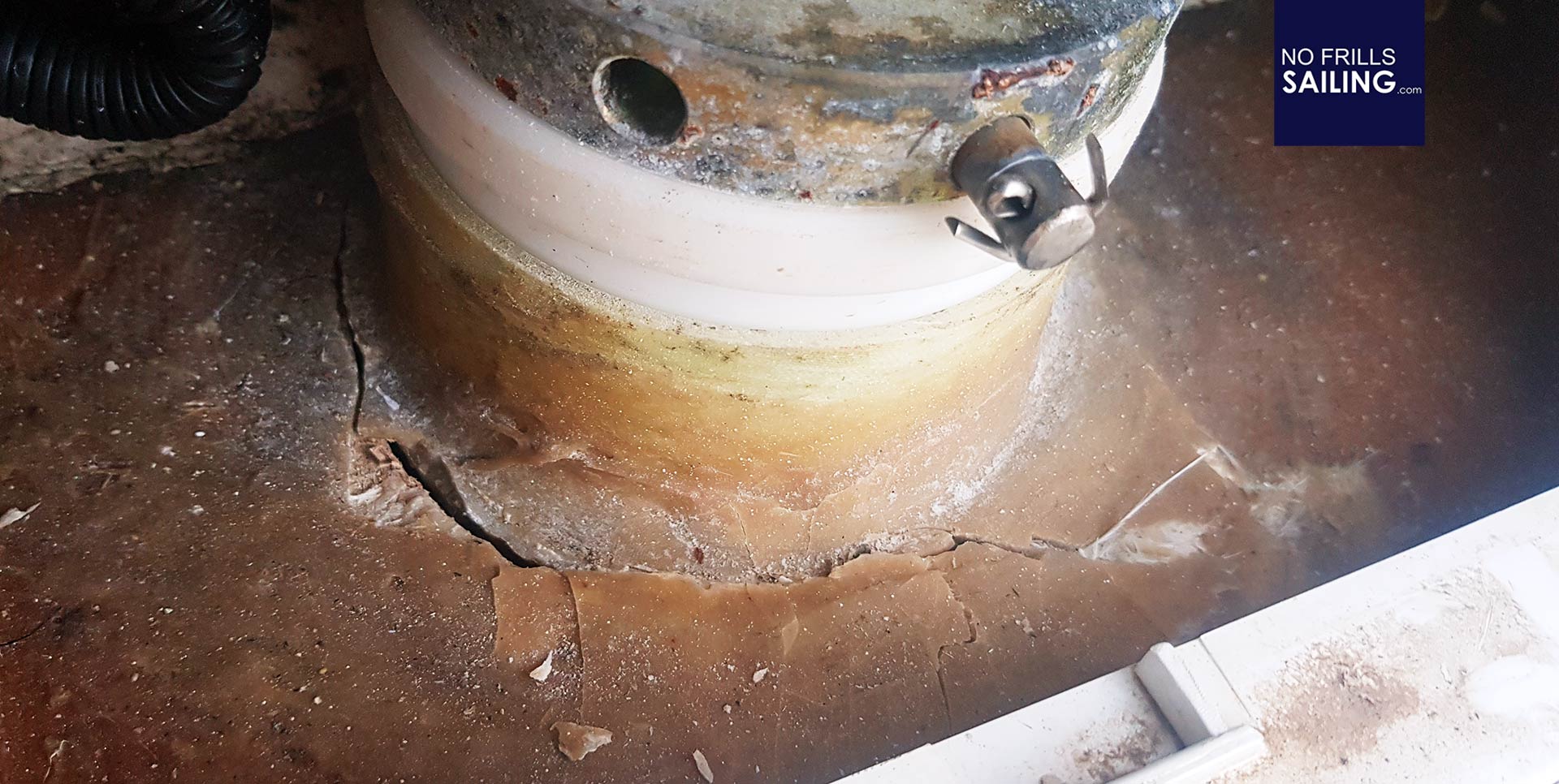
It was a very unpleasant meeting of my Sunsail 41.9, a boat I was commandeering in a regatta with a sandy shallow. I´ve analysed that whole incident in detail here and won´t dive deeper into the very event itseld, but what I´ve learned was how much violent motion and force is needed to get a GRP-rudder shaft and trunk cracked and destroyed. Not much, to be honest. After my rescuers insisted to have me pulled from the sandbar via stern (not via bow, as I stongly suggested), the rudder – as expected – buried itself into the sand and acted as a huge lever which eventually broke the hole trunk in a matter of seconds. Now, how is a rudder-trunk in a GRP-boat made?
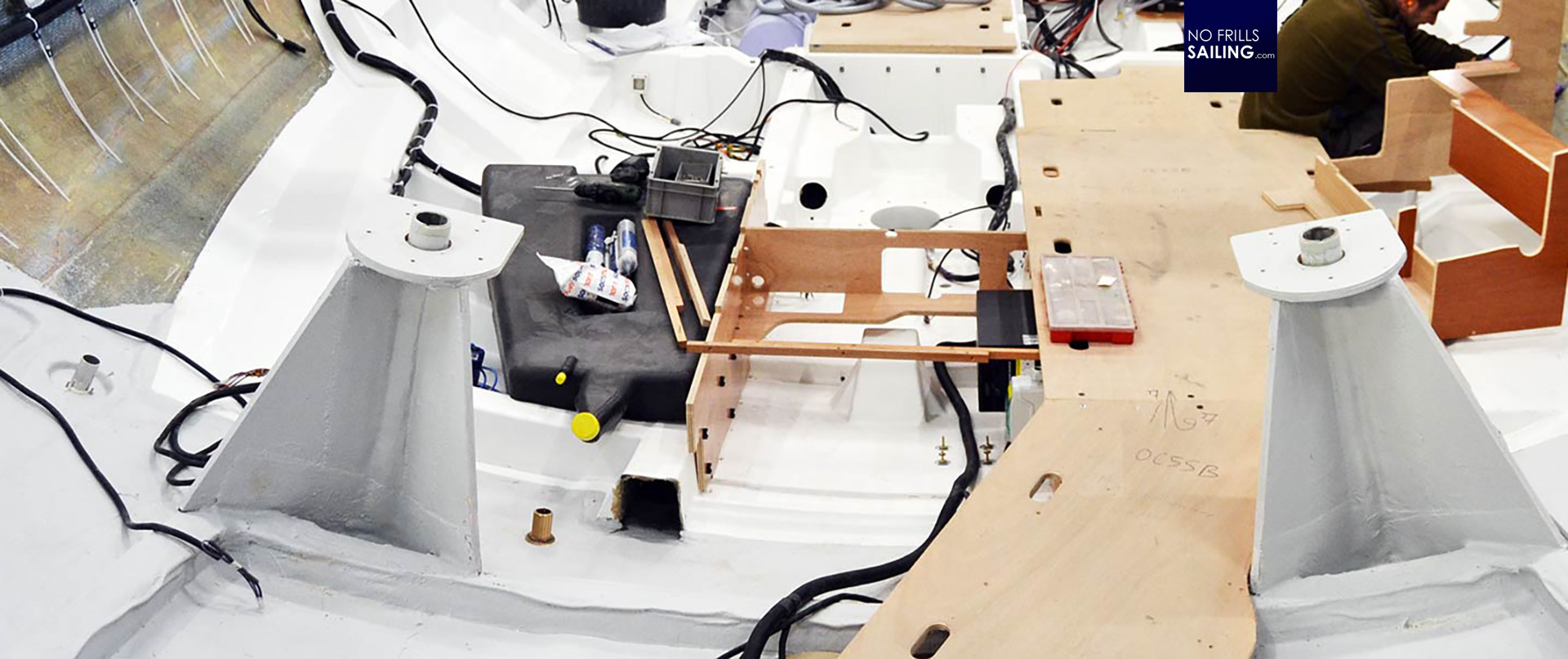
Looking at this boat in building you may clearly see that the rudder shafts are laminated to the hull. The shafts then get encased with thick plywood that is supported to three sides by a plywood construction. This whole setup itself will be laminated to the hull, soaked in resin and hardened in the process. It will support the forces acting on the shaft by the rudders in the water coming from either side – but won´t be able to hold the boat when falling dry. Some older boats, which can fall dry, will be equipped with support stands to be mounted at the ship´s sides. Their rudders are either foldable or made very, very thick and strong.
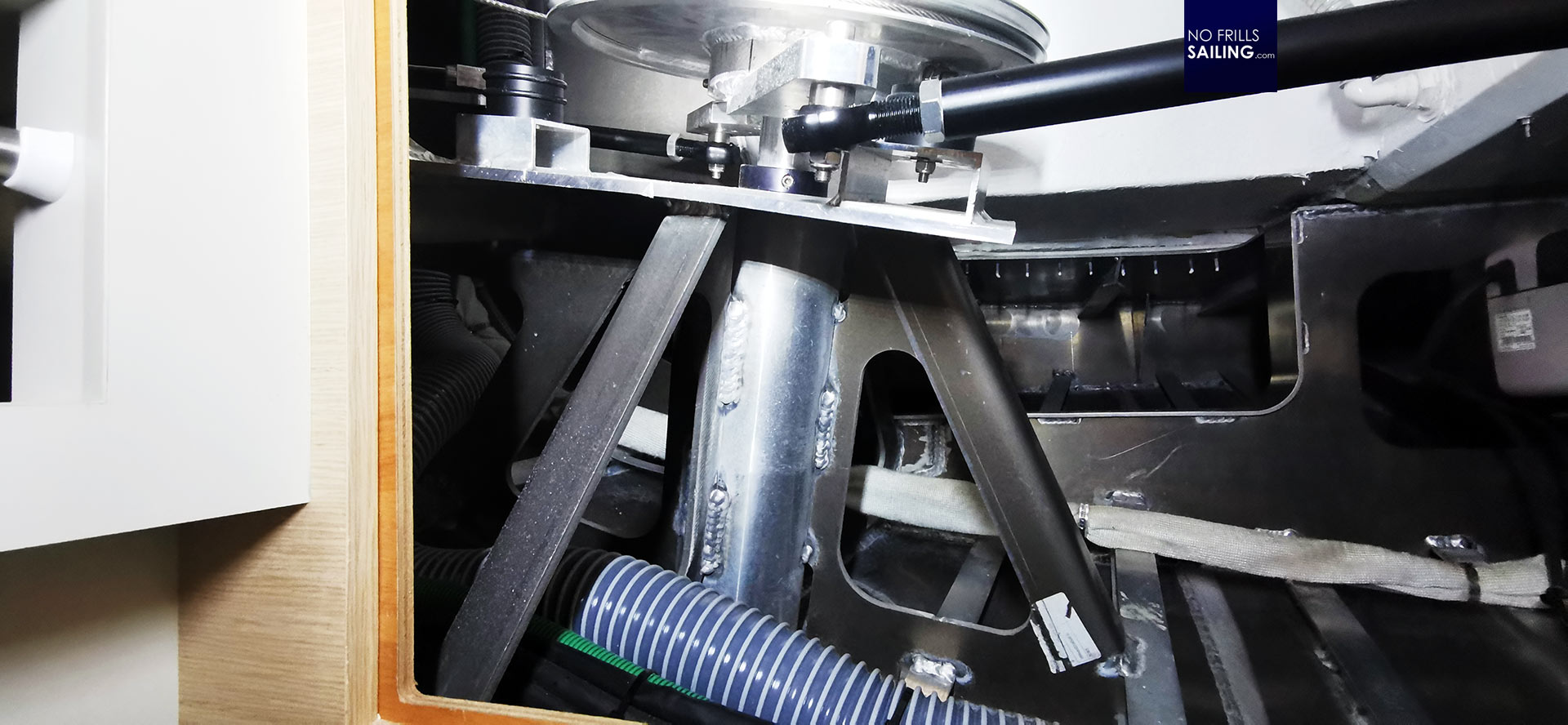
Looking at the trunk in the lazarette of the Allures 40.9 one can clearly identify a similar construction. A shaft, a supporting tube which also houses the rudder bearings, the quadrant of the steering cables and the supporting construction to take on the sheer-forces – as well as the loads from a hull sitting on dry land. All is done with metal, all is executed with surplus safety margin. Cracking or breaking this mount will require more than a soft sandbank for sure …
Safer sailing?
So, is it safer to be sailing on an aluminium boat? Absolutely yes! The hull and the appendages can take more loads, are much better protected against collision, are excitingly stiff and – cherry on top – can fall dry. Taking your boat to remote areas with scarce options when it comes to maintenance or repair, with chances of ice or damage by poorly charted regions will mostly always lead to a decision of acquiring an aluminium-made sailboat. The 40.9 made in Cherbourg is certainly a great choice for circumnavigators and explorers.
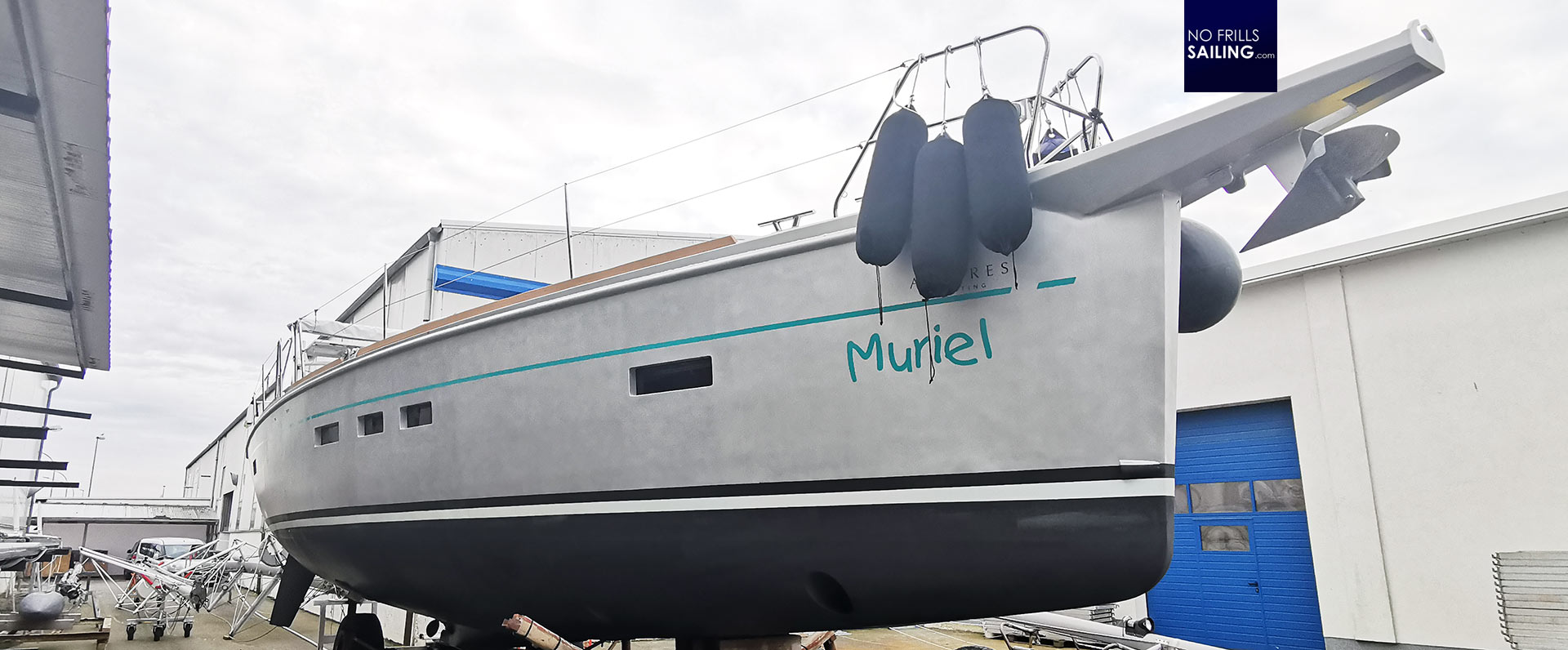
Sailing in safe, well-charted and frequently used sailing areas, like the Mediterranean, the trade-winds part of the Atlantic Ocean, the Coconut Route and basically areas where vacational sailing is done, a GRP-boat will do perfectly well. Sailing with friends and family, having a sabbatical and visiting the “nice”, warm and sunny parts of the world – no storms, no roaring fourties, no risky areas? A “plastic” boat is the best compromise between budget and usage. The key is to be honest to yourself: Evaluating what you want to do with your boat – and being realistic in your assessment.
Interesting articles too:
Hard chines in boat building: Why?
Pros and cons of inverted bows
At RM Yachts of La Rochelle: A different approach
